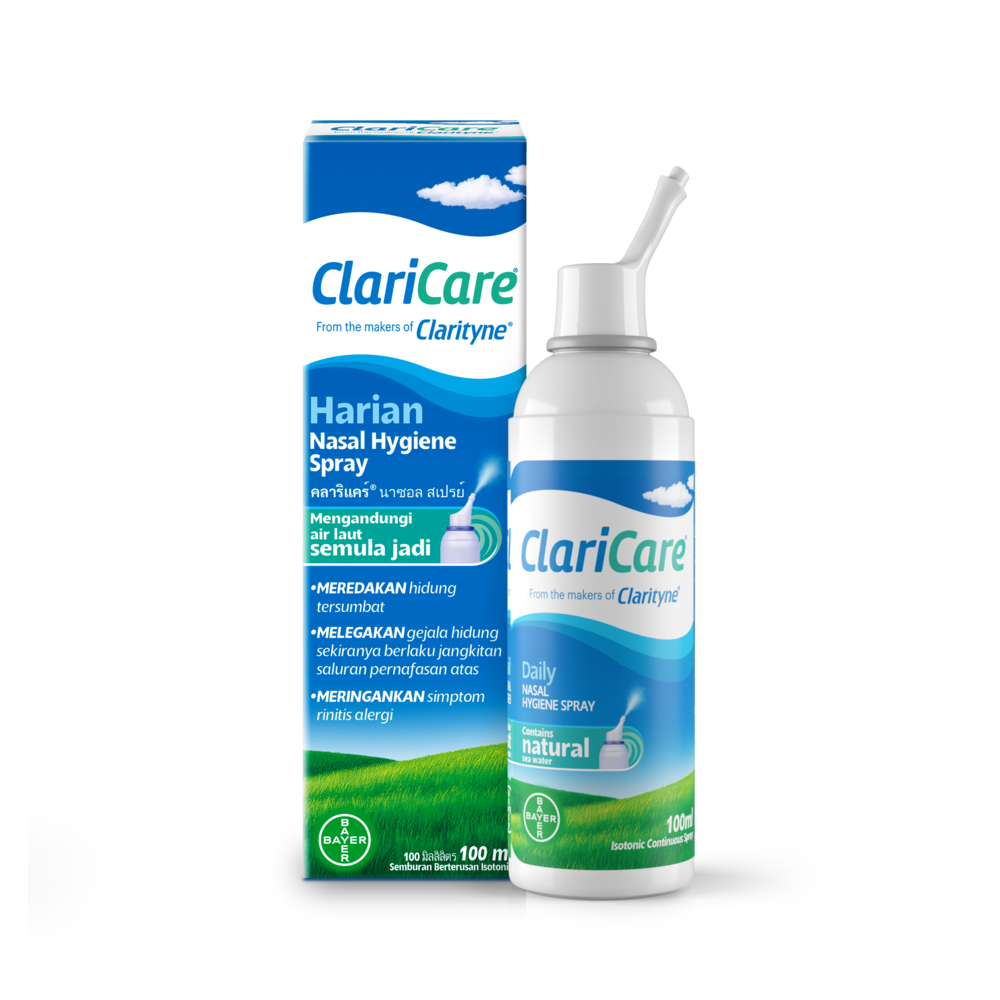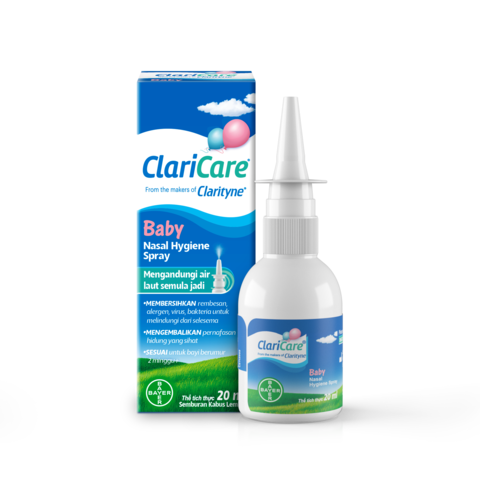What Does a Decongestant do?
A decongestant such as pseudoephedrine provides relief and reduces swelling, inflammation and the formation of mucus. This allows your airways to open up for easier breathing. Consult your healthcare professional to learn more.
Decongestants vs Antihistamines
Antihistamines like loratadine provide relief for many allergy symptoms, including a runny nose, watery eyes and an itchy throat. It does this effectively by blocking the immune response that causes discomfort when an allergen is inhaled or touches your eyes. However, antihistamines may not be able to alleviate congestion, although they can often function together with decongestants.
A combination of an antihistamine and a decongestant such as loratadine-pseudoephedrine can provide fast, effective and long-lasting relief of cold & allergy symptoms, including congestion. Consult your healthcare professional to learn more.
Other Home Remedies for Congestion
- Saline or saltwater intranasal sprays such as ClariCare® can naturally wash the mucus out of your nostrils. Since decongestants are not recommended for children, saline spray is a very popular and effective way to provide relief for your sleepless child who has a stuffy nose.
- Humidifier can help to relieve congestion by increasing the amount of moisture in your bedroom air. They are particularly suitable for use during the colder times of the year, and can counteract the dryness in your nose, which is caused by an inflammation with moisturising humidity.
- Take a hot shower Breathing in steam can thin mucus and help drain it from your nose, providing effective relief.
- Drink fluids Staying hydrated is always important, particularly when you’re sick or suffering from allergies. Hot teas and liquids can help to soothe an inflammation of the nose and prevent dehydration.
- Place a hot towel on your forehead This can help to ease the pain and pressure caused by congestion.
- Avoid irritants Cigarette smoke, chlorine in pools and perfumes can irritate the sinuses. If you suffer from congestion, it is best to avoid these irritating substances.
Follow Guidelines for Decongestants
Generally speaking, there are more restrictions for taking a decongestant as compared to restrictions for taking an antihistamine . For instance, you should not take a decongestant if you are taking an MAOI inhibitor. It is also advisable for you to check with a doctor if you have a pre-existing medical condition. At the same time, be sure to carefully read warning labels on decongestants and all other medications before taking them.
REFERENCES
- Nasal Congestion: Care and Treatment. Cleveland Clinic. Accessed March 18, 2020.
- https://www.healthline.com/health/allergies/decongestants#1
- https://www.webmd.com/allergies/decongestants
- https://www.verywellhealth.com/what-are-decongestants-770588
- https://my.clevelandclinic.org/health/drugs/8612-allergy-medications
- https://www.compoundchem.com/2015/01/06/decongestants/








